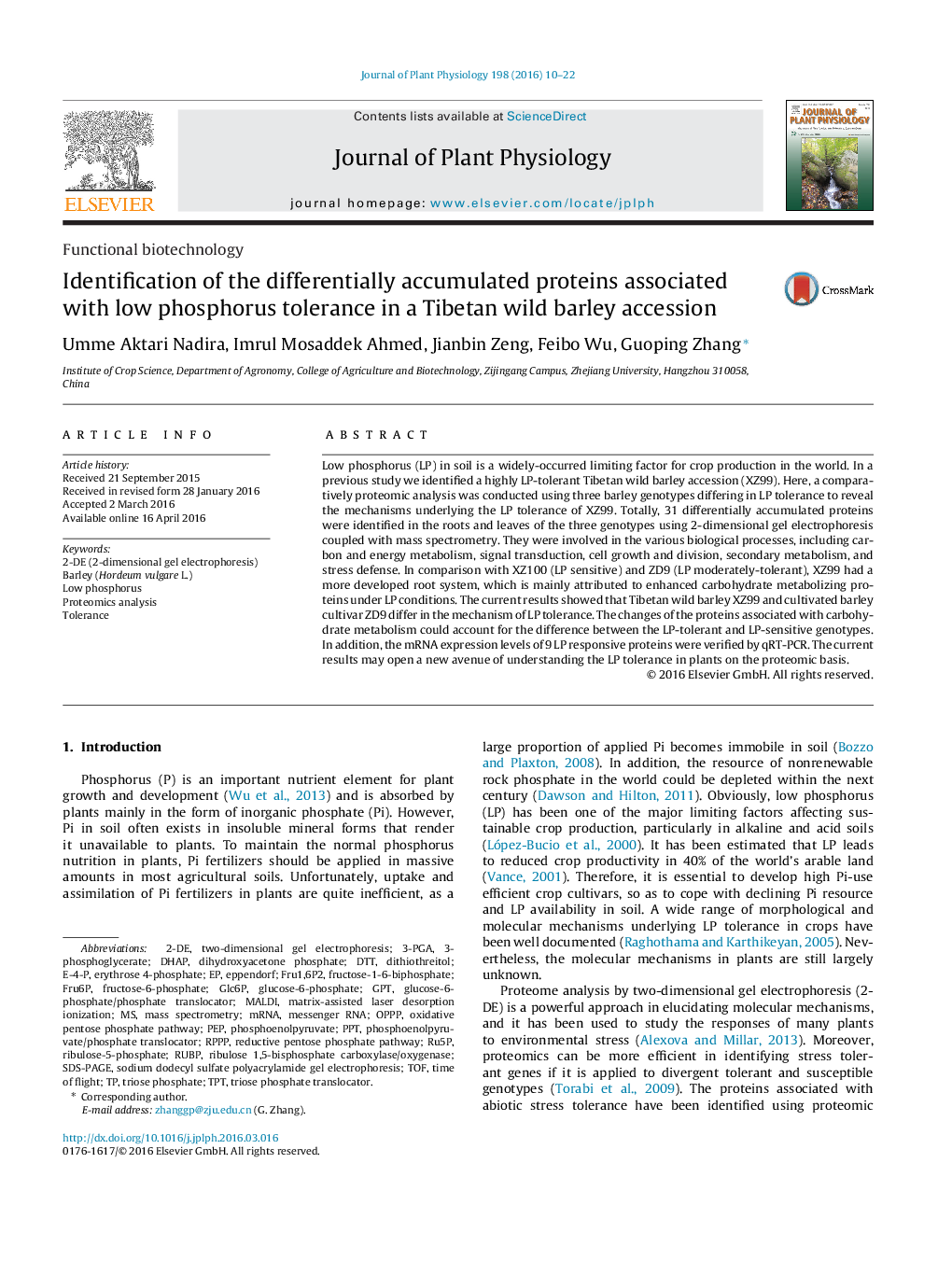| Article ID | Journal | Published Year | Pages | File Type |
|---|---|---|---|---|
| 2055514 | Journal of Plant Physiology | 2016 | 13 Pages |
Low phosphorus (LP) in soil is a widely-occurred limiting factor for crop production in the world. In a previous study we identified a highly LP-tolerant Tibetan wild barley accession (XZ99). Here, a comparatively proteomic analysis was conducted using three barley genotypes differing in LP tolerance to reveal the mechanisms underlying the LP tolerance of XZ99. Totally, 31 differentially accumulated proteins were identified in the roots and leaves of the three genotypes using 2-dimensional gel electrophoresis coupled with mass spectrometry. They were involved in the various biological processes, including carbon and energy metabolism, signal transduction, cell growth and division, secondary metabolism, and stress defense. In comparison with XZ100 (LP sensitive) and ZD9 (LP moderately-tolerant), XZ99 had a more developed root system, which is mainly attributed to enhanced carbohydrate metabolizing proteins under LP conditions. The current results showed that Tibetan wild barley XZ99 and cultivated barley cultivar ZD9 differ in the mechanism of LP tolerance. The changes of the proteins associated with carbohydrate metabolism could account for the difference between the LP-tolerant and LP-sensitive genotypes. In addition, the mRNA expression levels of 9 LP responsive proteins were verified by qRT-PCR. The current results may open a new avenue of understanding the LP tolerance in plants on the proteomic basis.
